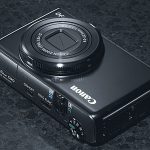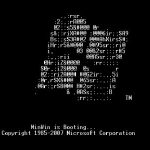Comcast deal for NBC Universal is about content, not broadband

After this morning, there should be no question in anyone's minds whatsoever as to what Comcast's deal with General Electric for control of NBC Universal is about: NBCU is a huge producer of cable TV content, and Comcast would like to be the parent company of that producer. The deal isn't so much about Hulu, or new media, or creating some walled garden around content distribution, as many would have believed and expected.
Comcast CEO Brian Roberts made this fact pretty clear during Comcast's investor earnings call this morning: This is not a technology deal. Comcast, the pipeline company, is already making deals in the technology side, including providing 10% of the operating capital of Clearwire. The pipeline company is going ahead with its plans to produce its own Web-based on-demand distribution network, which Broadcasting & Cable has learned will be called Xfinity. (Comcast must have used the same consultant Sprint used to come up with "Xohm.") And in response to direct questions today as to whether Comcast's indirect acquisition of NBCU's stake in video service Hulu would change Comcast's plans for deploying "TV Everywhere," Comcast COO Stephen Burke responded that he believed NBC's restraint in releasing its own content to Hulu was "smart," and that Comcast would let NBC continue in that regard.
Apple, can you do for video what you did for music -- perhaps saving us all from NBComcast?

Last month's rumors about Apple talking to networks and Hollywood about TV show subscriptions got me thinking about what CEO Steve Jobs & Co. should do for making video content more accessible. I'm musing even harder today, given the pending announcement that Comcast will buy NBC Universal. The deal should have wide-ranging impact for cable and online TV content and companies that distribute it -- everyone from Hulu to Apple.
Now would be a really good time for Apple to rethink its video content strategy and make changes that will hold what I'm unaffectionately calling NBComcast at bay. Since I'm in one of my know-it-all moods, I'd like to offer a few suggestions to Apple. It's time for Apple to leverage its strengths by offering something like "Complete My Album" or "Upgrade to iTunes Plus" for movies, TV shows and music videos. Such iTunes features could change how people electronically rent or buy video content.
Five compact digital camera myths and realities

The holidays are fast approaching and geek gift shopping with it. This year I will post several shopping primers for making the best decisions in buying tech gear. This first installment is about compact digital cameras and what features do and don't matter. It's particularly important because geeks used to buying PCs might wrongly think that more of this or that matters for digicams. Misplaced emphasis on the wrong features can lead to disappointing purchases.
Some background: I'm no professional photographer, but I do know digital photographic gear. I bought my first digital camera in 1997, the 1-megapixel Kodak Digital Science D120 (OK, I didn't know better). The D120 was one of the first 1-megapixel compact digicams selling for (barely) under $1,000. I purchased additional compacts from Canon, Kodak, Olympus and Sony over the next couple of years, but no compact satisfied until the 3.3-megapixel Canon PowerShot S20 in summer 2000. I got plenty of use from the S20, including shooting the opening of the first Apple Store in May 2001.
Mark Russinovich on MinWin, the new core of Windows

Since the first public news of Windows 7's development back on October 2007, we've heard about a component of the operating system called MinWin -- a tantalizingly titled element that sounds like some kind of portable Windows kernel. Now Windows 7 is actually residing on paying consumers' desktops, and inside of it -- and inside of Windows Server 2008 R2 -- is the MinWin kernel architecture...and yet few have been made clear as to what it actually is.
A few weeks ago in Los Angeles, Microsoft technical fellow Mark Russinovich -- absolutely the world's leading authority on Windows performance and architecture -- took time to explain to developers attending PDC 2009 in Los Angeles exactly what this is. In summary, it's a way to graft onto Windows some semblance of the architectural layering it should have had, if its architects in the 1980s had any foresight into how Windows would be used thirty years later. It enables current and future Microsoft developers to evolve new configurations of the operating system, without having to rewrite core services or worry about breaking dependencies between those services and upper-level APIs.
Google begrudgingly adjusts news crawling for paid publishers

With a group of blog posts this morning, one of which literally said paid content was probably not a good idea anyway, Google announced it was making an adjustment to its First Click Free aggregation scheme for news publishers. The adjustment to the service, first rolled out in 2007, will now enable readers to sample more content before subscribing through the publisher's own portal.
"While we're happy to see that a number of publishers are already using First Click Free, we've found that some who might try it are worried about people abusing the spirit of First Click Free to access almost all of their content," reads this morning's post to Google's Webmaster Central blog. "As most users are generally happy to be able to access just a few pages from these premium content providers, we've decided to allow publishers to limit the number of accesses under the First Click Free policy to five free accesses per user each day."
Fee or free? Murdoch, Huffington square off over the cost of Internet news

The problem remains: How can a business be profitable at producing news for the Internet audience when the principal method for ensuring that the news is visible to that audience, is a free system? The US Federal Trade Commission could not have chosen two more appropriate representatives of the opposite poles of this issue than News Corp. Chairman Rupert Murdoch and mega-blog editor Arianna Huffington, to head its public workshop in Washington yesterday on the subject of the future of the online news industry.
In one corner stood the world's largest producer of financial news, currently afflicted with the problem of its core product becoming publicly disseminated in a manner that bypasses its mechanism for charging for it. In the other corner is arguably the Web's most successful blog publisher, who argues that the free Web is merely the new, permanent reality, and that the long-term solution to the profitability problem is to empower "citizen journalists" with the impetus to produce original journalism for little or no compensation.
Microsoft's 'Black Screen of Death' denial solves the blame not the problem

Microsoft's response to the so-called "Black Screen of Death" problem is a throwback to an older and equally ineffective strategy -- what I have called "security by PR." Rather than managing the problem, Microsoft is managing the reaction. That simply is the wrong approach to quality customer service or instilling users with confidence about using Windows. With Windows 7 only in market for about six weeks and the holiday sales season just started, the company's priority should be fixing the problem rather than denying culpability.
Recap: Some Windows users are complaining of a Black Screen of Death (KSoD), where the operating system essentially fails to fully load at startup. KSoDs aren't new, but there have been recent reports suggesting an increasing number starting in mid November. Last week, British security firm Prevx claimed that November 10 Microsoft security updates caused recent KSoDs. However, in a late-day blog post yesterday, Prevx backed away from its assertion:
Security firm: Windows patches not responsible for 'Black Screen of Death'

When Betanews reported last June about occurrences of the infamous "Black Screen of Death" (KSoD) in Windows Vista, a reader wrote to suggest to us that we might have only considered the matter so important this late in the game because suddenly it happened to us. A similar opinion may be appropriate for British security firm Prevx, which now says it has "exonerated" last month's set of Patch Tuesday updates from Microsoft as the cause of what it called last night a "crop" of KSoD incidents.
Early Tuesday evening, Prevx director of malware research Jacques Erasmus reported on his company's blog that he and his team have made "significant progress in determining specific triggers of the black screen event." Specifically, it determined that a side-effect accidentally discovered over three years ago by none other than SysInternals' Mark Russinovich (now with Microsoft), led to instances where Windows' product activation inadvertently triggered the black screen. When a System Registry entry of String type is supposed to be terminated by a null character (0) but isn't, the result is that the entry itself may disappear from REGEDIT, Windows' well-known Registry Editor. Such an entry may also trigger KSoD conditions.
My Windows 7 confession (and why you should confess, too)

They say that confession is good for the soul -- or the mind. I'll make mine but insist that you read no further unless you're willing to make yours in comments. Deal?
My confession is the real reason for running Windows 7. In September, I wrote "Why I chose Windows 7 over Snow Leopard (and why you should, too)." In that post, I explained about Windows 7 being my primary operating system since January on two different Sony VAIO notebooks (I see from comments how many Betanews readers remember the Sony rootkit and just love the company for it). As I explained in that post, two primary reasons led to my picking the newer version of Windows over Mac OS X: Windows 7's fresh, new user interface and VAIO Z720 hardware features -- mainly higher-resolution display -- compared to 13-inch MacBook Pro. But neither of these reasons is why I stuck with Windows 7, even for the productivity gains realized from using the operating system over Mac OS X Snow Leopard.
Apple settles with Psystar except for 'circumvention devices'

It would appear that Apple Inc. and Mac clone maker Psystar were on the way to a complete settlement that would have been announced today, but for one small hitch: Psystar wants to continue selling a $49.99 software package called Rebel EFI, which claims to enable the installation of "every operating system" on an Intel-based computer. However, it's clear from the product's Snow Leopard skin exactly which OS it's really referring to.
Just when this whole conflict might have ended, Apple referred to this piece of software in its request for a permanent injunction against Psystar last week, calling it a "circumvention device." In fact, the company came dangerously close to suggesting that it was this device, not the Psystar Open computer itself, that was the infringing element -- a suggestion that, if the judge had agreed with it, might have ended up endangering a big money award for Apple.
Where did Apple's Black Friday sales go?

Yesterday, Piper Jaffray analyst Gene Munster issued a report indicating that brick-and-mortar Apple stores sold 8.3 Macs per hour on Black Friday versus 13 per hour in 2008. Will Macs sales really be down this holiday and could it be because of, gasp, Windows 7?
Microsoft and its PC partners didn't have anything really new to offer consumers last holiday season. Macs had -- and still have -- a newness for many holiday shoppers, the majority of which already use Windows PCs at home or work. The only real barrier to buying a Mac during Holiday 2008 was price: Spending $1,000 or more. Same barrier remains this year.
Microsoft denies latest 'Black Screen of Death' claims

A spokesperson for Microsoft told Betanews early this afternoon that it has officially investigated claims that its latest security updates are the cause of an alleged "crop" of "Black Screen of Death" incidents, for which British security firm Prevx hurriedly released something billed as a possible fix. The claims, the company says, are unfounded.
"Microsoft has investigated reports that its latest release of security updates is resulting in system issues for some customers due to changes made by the security updates to the registry," the spokesperson told us. "Our comprehensive investigation has shown that the November security updates, the Microsoft Malicious Software Removal Tool, and the non-security updates we released through Windows Update in November do not make any changes to the registry as claimed. We do not believe Microsoft Updates are related to the behavior described in these reports."
Windows desktops and notebooks reach near price-performance parity for Holiday 2009

Historically, Windows portables sold for considerably more than desktops, while delivering less performance or features. This holiday season, prices will be closer than ever -- and, aside from netbooks, there will be little significant difference in performance for price. The question: If prices are about the same, who wouldn't buy a notebook for portability over a desktop? Further: At what point should desktops go the way of the dodo?
At U.S. retail in October, the average selling price for a Windows portable PC was $519, just $28 more than desktops, according to NPD. A year earlier, the portable ASP was $659 and $556 for desktops. Windows desktop and portable ASPs could grow even closer, as super low-cost netbooks continue sales gains. Go back a few years and the gulf between desktops and portables is greater -- as is the ASP. According to Merrill Lynch, in 2006, the portable ASP was $1,160 and $775 for desktops (high Mac ASPs inflate these numbers, which are for the whole PC market not just Windows).
Most Commented Stories
© 1998-2024 BetaNews, Inc. All Rights Reserved. Privacy Policy - Cookie Policy.




